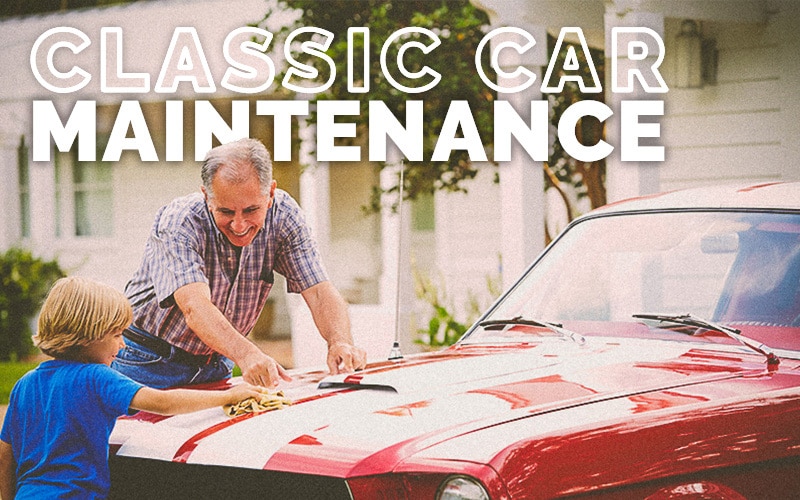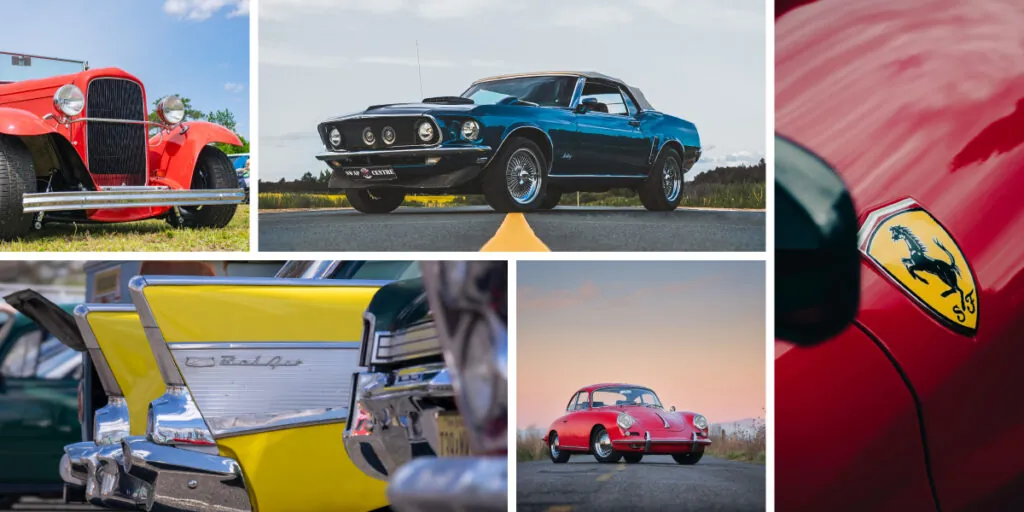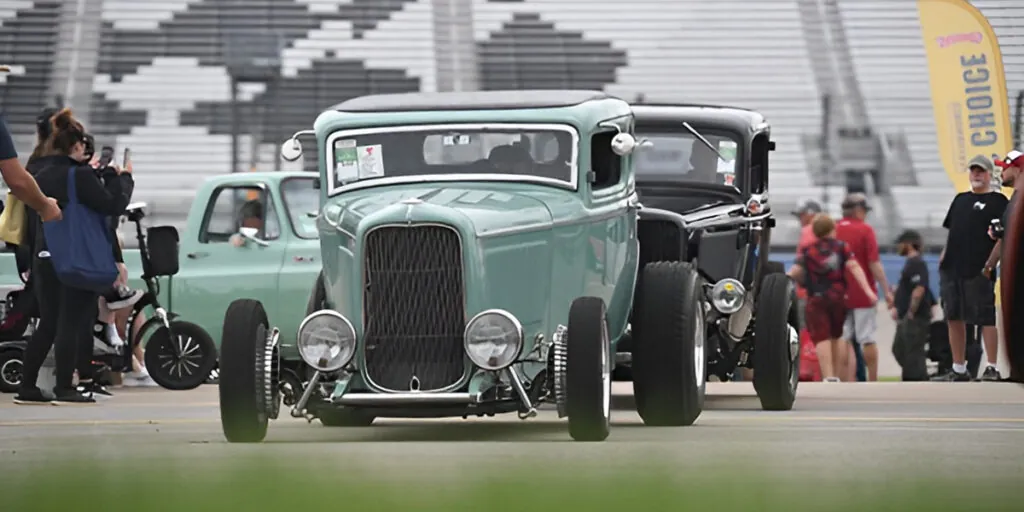Owning a collector car is a joy, a privilege, and a great way to meet new people – but it’s also a bit of a responsibility when it comes to classic car maintenance. Consider the following: every “barn find” candidate for restoration was once a completely functional automobile. There’s a reason classic car collectors joke about the phrase “running when parked.” If you want to avoid that particular fate, it’s best to get ahead of your maintenance and stay ahead of it! By doing so, you’ll ensure that your classic ride won’t let you down when it’s time to hit the road.
We put together eight tips for your classic car maintenance checklist to help keep your treasure in top shape and ready for its next adventure.
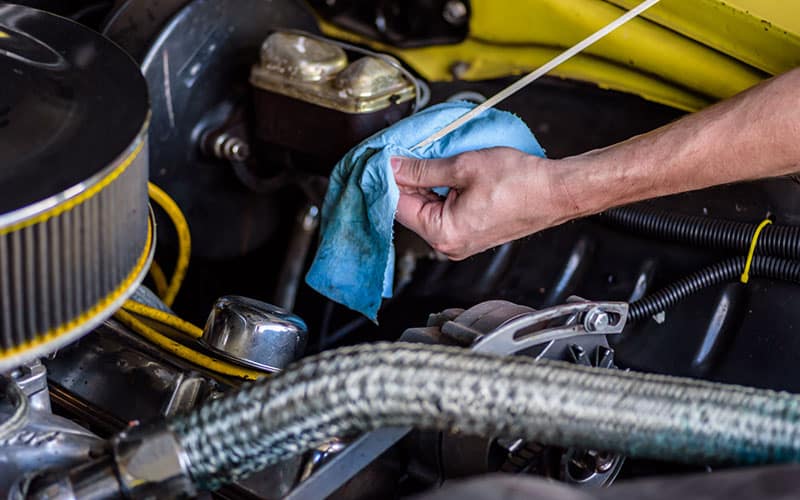
1. Keep Your Eye on Fluids – Watch Their Levels and Condition
Do you check your oil after your classic car has been sitting for a while? Of course you do! But you’ll want to do more than that. As a minimum for classic car maintenance, you should periodically “preflight” your classic by checking levels for oil, coolant (if that applies!), brake fluid, power steering fluid, (again, if you have it) transmission fluid, and differential fluid. Got a Citroen? Then you’ll need to check the hydraulics as well – but remember, “blinker fluid” is just a joke we tell each other.
It’s never a bad idea to leave plain white office paper under known leak spots so you can get a quick idea of what’s leaked out – but remember that some fluids also evaporate, while others can migrate elsewhere in the car, away from where they are needed.

2. Keep Your Classic Car Clean and Dry
Can you harm your classic just by letting it get dirty? You’d be surprised. On the exterior, dust and dirt buildup can hide the appearance and development of rust and corrosion – or even aid the process. Under the hood and in the running gear, excessive dirt can act as an insulator, raising the temperature of critical fluids or components. It can also contaminate your fluids when you check or change them. So while you don’t need to keep most cars in 100-point concours condition all the time, you shouldn’t let them get dirty enough for onlookers to inquire after “the original color.”
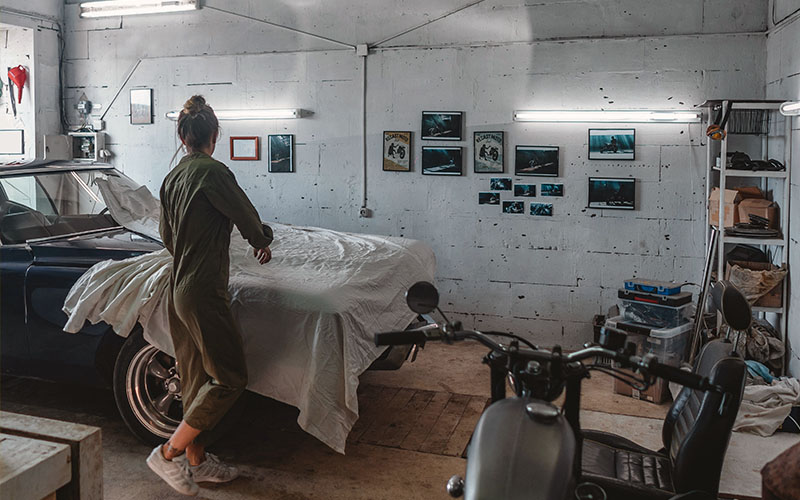
3. Properly Store with Care
The easiest way to keep your classic clean and dry? Indoor storage on a hard floor with the appropriate car cover. Why a hard floor? Because condensation tends to rise off the ground on gravel or dirt floors, increasing underbody and frame corrosion. We also gave some great storage tips so don’t be afraid to use them.
4. Original Parts – Stay on Top of Your Perishables
Many older classics, particularly prewar and classic British cars, have perishable wear components. The Ford Model T, as an example, originally used “Scandinavian” cotton drum liners for the transmission. Today, many owners exchange that for Kevlar – but if you’re keeping it original, then you’re going to be responsible for the condition and lifespan of those perishable bands. There’s a surprising amount of leather, wood, cotton, and canvas in older cars. Make sure you know where it is, what it does, and how to check its condition.
Think you’re out of danger because you drive a “young-timer” or newer classic? That might not be the case. Not only is there still a lot of rubber in newer cars, there’s always a unique opportunity for trouble. For example, some W140-generation Mercedes S-Class cars featured a biodegradable wiring harness to help the environment after the car was junked. Turns out they bio-degrade just a little faster than everyone thought!

5. Rust Never Sleeps
Want your classic car to last a long time? Figure out where it’s going to rust and stay ahead of corrosion. Pickups tend to rust at the “cab corners” and where the bed has been used heavily. Newer vehicles with windshield replacements can accumulate corrosion under the new adhesive. Hondas and British cars can rust everywhere. Get your flashlight out and take a look under the hood, under the car, where the body meets the frame, or even where the suspension components meet a unibody. Get to know the difference between rust on a component part (which can be addressed any time you need to) and rust on the body attachments (which is a Code Red situation).
Cleaning the underbody of your car after a long drive can go a long way towards preventing corrosion, but it’s impossible to get away from the fact that rust is a natural process for uncoated and lightly coated steel. Anywhere you have that, you’ll eventually have some rust.
What’s the best way to address what you find? It could be anything from a quick spray of paint-over-rust protectant to a rotisserie restoration. Talk to the marque experts to get advice for your particular car.
6. Keeping the “Moving Parts” Moving
It’s a question often asked by classic car owners: How often do I need to grease the chassis and suspension? Well, nobody ever did it too much, that’s for sure. Get to know the lubrication schedule for your particular car – there can be a dozen or more grease fittings on an older chassis. Once you’ve done that, get up top and look at things like seat tracks, adjustable steering wheels, window rollers, and other things that only move sometimes. This goes double or triple for any feature that was considered “new and innovative” at the time, like the swing-away steering wheels or seats of the Sixties.

7. Tires Get Tired
It’s an unfortunate fact of life that tires don’t last forever – even if you never use them. Temperature fluctuations, ultraviolet light from common sources like the sun, and ozone in the atmosphere can all combine to harden and crack the rubber surfaces of your tires. The steel or nylon belts beneath that rubber can also lose flexibility or strength during storage.
How often should you replace tires? For classic car maintenance it’s a common industry recommendation to replace six years after the date of manufacture. That’s the safest practice. If you want to extend the life of your tires beyond that, you will need to become very good at evaluating the condition of the rubber. Want to be double-sure? Ask a racer friend for a tire hardness tester and learn how to use it.
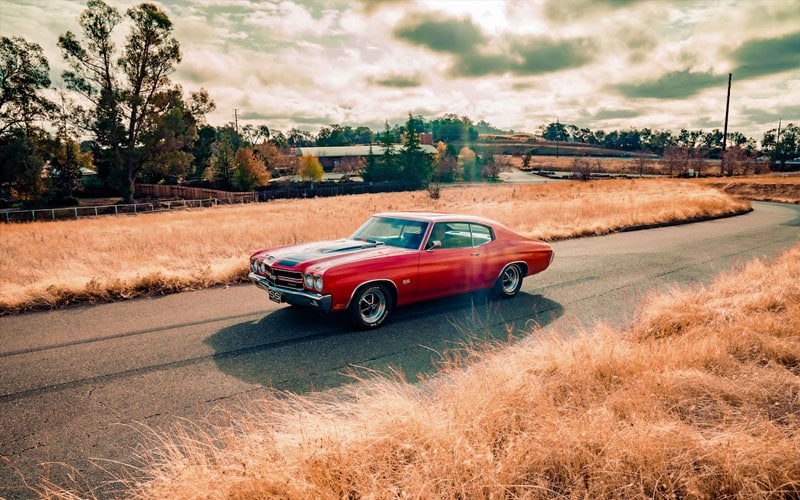
8. Don’t Let It Sit Long – Get Out and Drive!
The best thing you can do to keep your classic car healthy: drive it once in a while. This will circulate fluids, put various components through their ranges of motion, and realign all the moving parts. Not driving a car is the single harshest thing you can do to it. Consider this an excuse to get your car out of the garage and on the road, where you can enjoy it a bit. It’s the responsible thing to do – and it will remind you why you’re going through all this trouble in the first place!
